Twitter in 2007: The Open Platform That Wasn't
by Richard MacManusHow do Bluesky and Mastodon compare with Twitter in 2007? Nobody quite knew what Twitter was back then, yet devs were already building on it.

The first wave of people to join Twitter was in March 2007, when it became the trendy app at the annual SXSW conference in Austin, Texas. I hadn’t gone to SXSW that year, but I arrived in San Francisco the month after for Web 2.0 Expo. I don’t recall who told me about Twitter (it may’ve been mentioned in a ReadWriteWeb Skype room), but I signed up on Saturday, April 14th, the day before the conference started.
My first tweet was a complaint about a squatter taking the “readwriteweb” username (so I had signed up instead as @RWW). My second tweet was more descriptive: “checking out web 20 expo schedule. getting ready to join Fergus at Colibri Mexican Bistro - 438 Geary St at 7.30. Then drinkies afterwards.”
2007: Nobody Knew What They Were Doing
My first two tweets tell you all you need to know about Twitter in those days: you were either complaining about something, or telling the world what you were eating. Twitter was so new back then, neither the technologists nor the Web 2.0 early adopters had any idea how to use it — or what its purpose was.
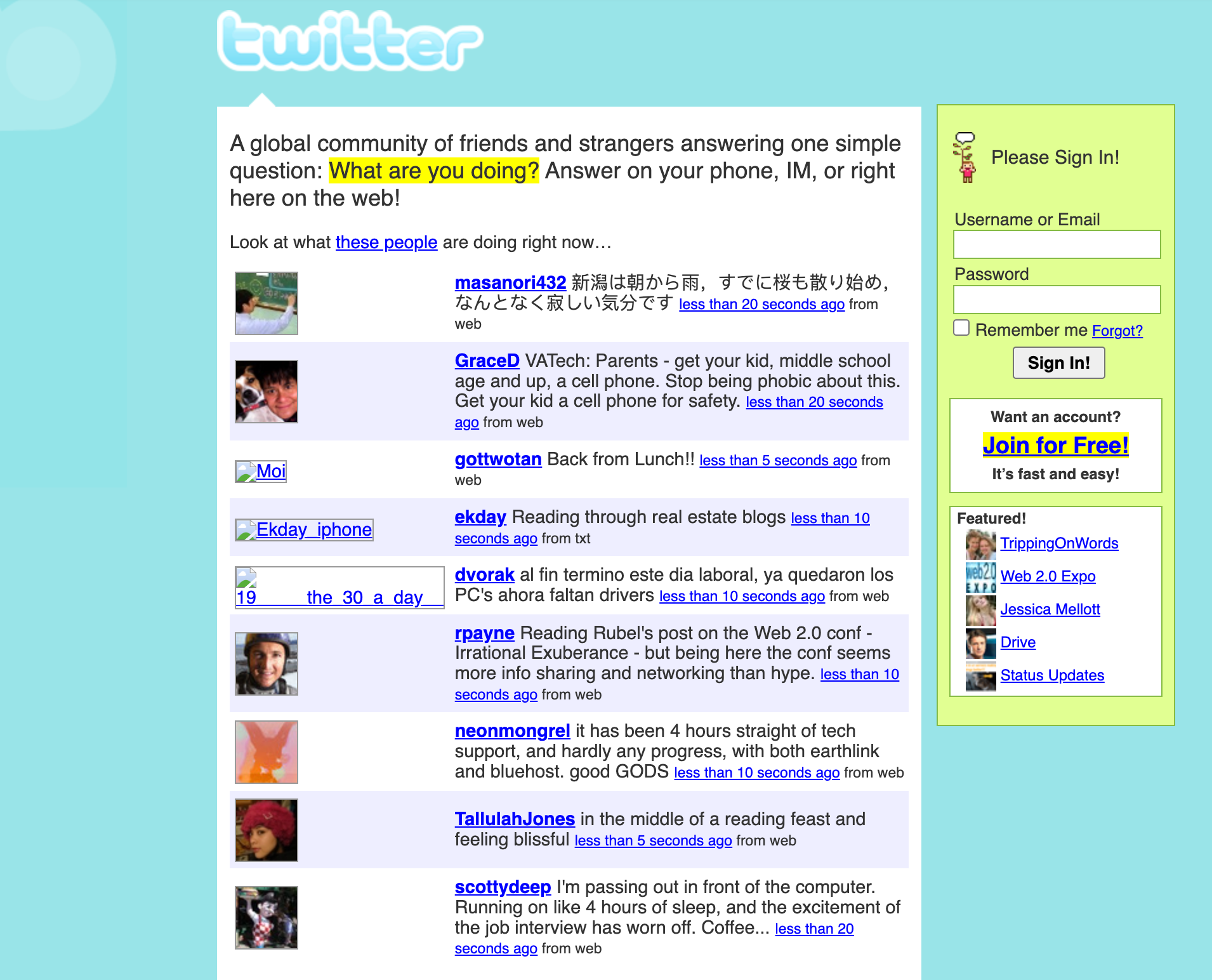
“What are you doing?” Twitter at the time I joined, April 2007.
More than any other internet product before or since, with the possible exception of TikTok about a decade later, Twitter was massively genre-busting in 2007. In a post about a month and a half after I joined, I described it as an “IM/blogging hybrid.” In another RWW post around that time, Alex Iskold called Twitter “a new form of communication that is both a natural step from blogging and a weird experiment normally found in neuroscience labs.”
At the time I signed up, Twitter wasn’t even its own company — it was a project of Obvious Corp, a kind of holding company run by Ev Williams. However, the Monday after I joined, Williams announced Twitter, Inc and appointed Jack Dorsey as Twitter’s first CEO. Williams called Dorsey “the genius behind the Twitter idea.” As proof, he linked to a Flickr photo Dorsey had uploaded in July 2006, which showed a rough sketch of a product tentatively named “Stat.us.” Dorsey himself described the idea as “a more ‘live’ LiveJournal,” so I wasn’t far off calling it an IM/blog hybrid.

Jack Dorsey’s notebook sketch of his stat.us idea in 2006.
An “Open” Platform
The most interesting thing about Twitter back in 2007 was that its development wasn’t being dictated by Dorsey, Williams or anyone else in Obvious or Twitter, Inc. It was the early community (who were almost all part of the web industry) and third-party developers who were coming up with the ideas that would eventually make Twitter one of the defining social media products of the 2010s.
In September 2007, ReadWriteWeb’s Sean Ammirati did a podcast interview with Twitter co-founder Biz Stone. Sean asked Biz what had surprized him the most about running Twitter? His reply:
“Actually, the biggest surprise really is the amazing amount of work — the creativity and work — that’s gone into projects with the API. We released that early on, as part of Twitter thinking we should definitely have this [the API], because, why not? Why not open this up? The result has been 200 applications already using Twitter - many of them significant drivers of updates, and many of them just really beautiful innovative applications. I think really the amount of activity around the API has been the most surprising experience.”
Neither Stone nor any of Twitter’s other founders ever claimed (to my knowledge) that Twitter was an open platform, in the sense that it wasn’t a commercial platform owned by Twitter, Inc. But…that didn’t stop the word “open” being flung about by others. Notably, by Twitter’s investors. Fred Wilson wrote in July 2007 (emphasis mine):
“If you think about it, Twitter extends short messaging (SMS) style communications to the web and does it in an open way that anyone can build on top of it. […] The breadth of activity in the Twitter ecosystem is astounding. Open systems that support emergent behavior are way more likely to become platforms and we are excited by the possibilities of new consumer facing web platforms.”
While “open” was stretching it, it is fair to say that the Twitter API was emergent at that time, since plenty of developers were using it. The API had first been mentioned on the Twitter blog as far back as October 2006, at which point there were already several third-party apps. By July 2007, there were enough apps for RWW to compile a top 10 list. Among the apps we highlighted: Squawk, Twitticious, Twapper, Twit Bin, TwittyTunes, Twitterment, and Flotzam. None of them went on to achieve future glory. But the main point is: developers at the time felt that Twitter was an open enough platform that they could justify building apps on it.
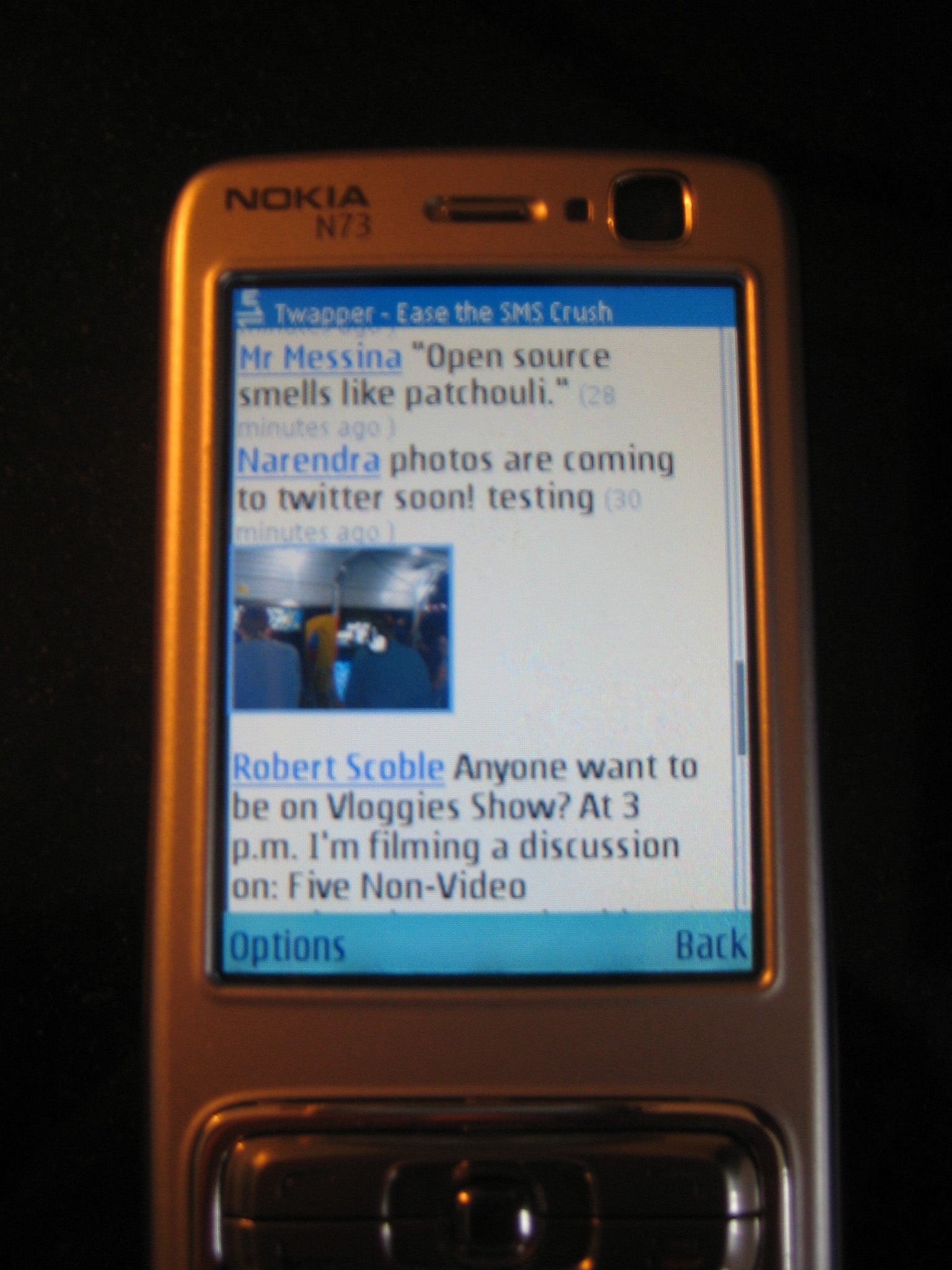
Twapper, a mashup of Twitter and the online calendar, 30Boxes; via Narendra.
Will the Real Open Platforms Please Stand Up
To cut a long story short, we found out in 2012 (and again in 2022) that Twitter wasn’t an open platform after all. Twitter betrayed the many developers who had built products — and sometimes entire businesses — on top of its API. While this didn’t harm Twitter’s user growth over the 2010s, it did plant the seed that a truly open platform for Twitter (or a product just like it) would need to be based on a decentralized protocol. In other words, a protocol that wasn’t owned by a single company.
Ironically, Jack Dorsey himself launched a project inside of Twitter for just such a decentralized protocol. In December 2019, when he was still CEO, Dorsey tweeted that Twitter was funding a project to “develop an open and decentralized standard for social media” and that the goal was for Twitter “to ultimately be a client of this standard.” The project was named Bluesky.
Bluesky was soon turned into an independent company — but one that was dependent on funding from Twitter. Needless to say, Elon Musk promptly washed his hands of Bluesky as soon as he took over Twitter in October 2022.
Regardless, Bluesky continued its work and this year completed its open protocol (which it named the AT Protocol) and launched a private beta of a product built on top of it. The product is a direct clone of Twitter and I was fortunate to get an invitation to test it out.
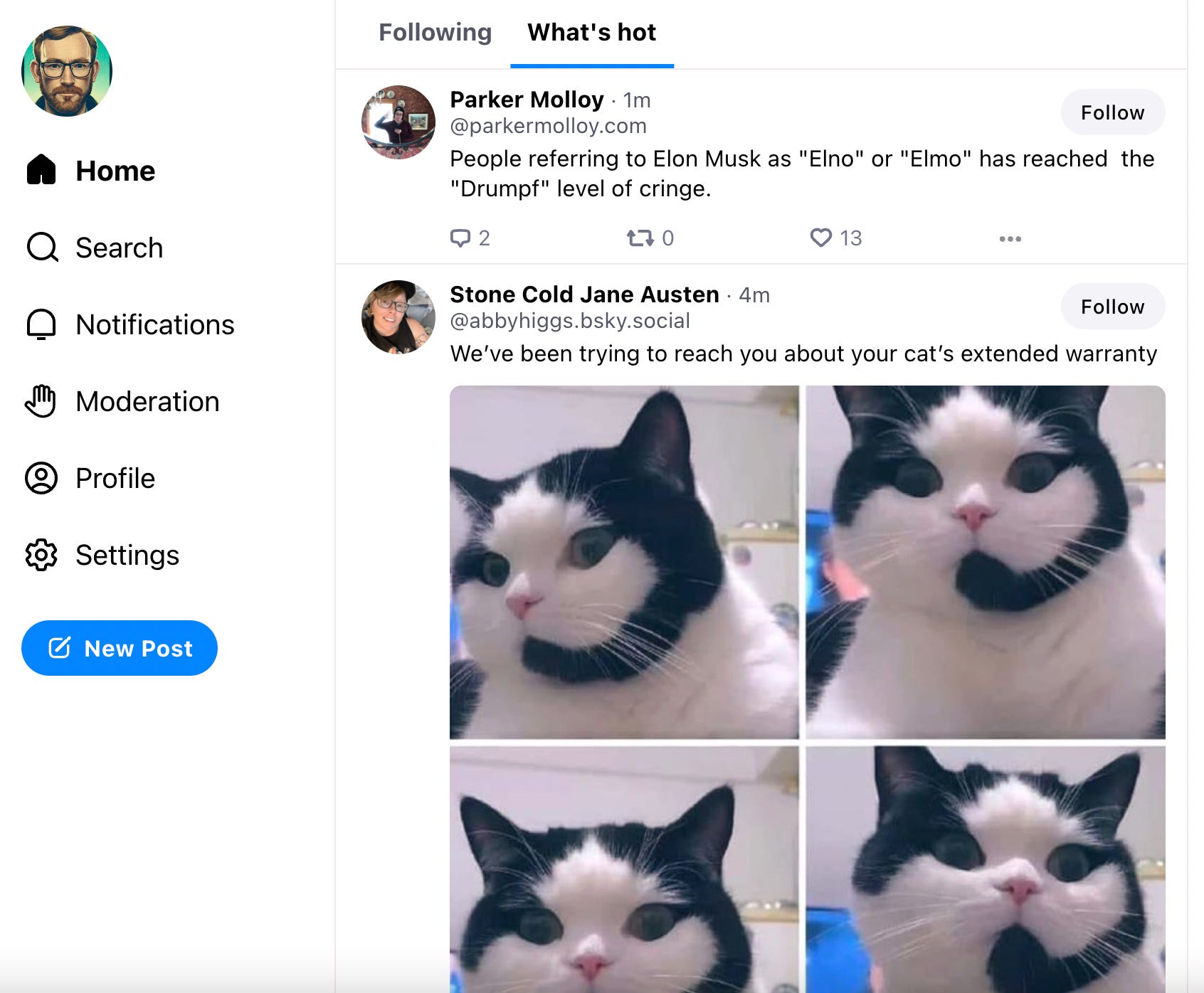
Bluesky’s “What’s hot” tab is where trending skeets and cat pics go to thrive.
The nascent Bluesky community, which numbers around 70,000-80,000 users in its current invite-only status, is trying hard to coalesce around the idea that Twitter was best when it was fun and a bit anarchic. There’s a sense that the majority of these early Bluesky users want to go back to a version of Twitter as it was in the 2008-11 range — just after Twitter users had figured out what the product was (remember, in 2007 nobody had any clue), and just before the First API Betrayal in 2012.
Already, Bluesky users have coined a term equivalent to “tweet” — they call posts “skeets.” There is also a (possibly unhealthy) encouragement of “shitposting.” That’s fine when it’s 70k users, but my bet is it won’t be so cute once the user base gets to 700k. In any case, what’s clear is that Bluesky’s early users want to re-capture the feeling of Twitter back in the late 2000s — whether or not they were Twitter users back then (many would’ve been too young).
Frankly, I don’t really care what the cool crowd is skeeting about. I’m most interested to see what happens with the AT Protocol once third-party developers start to build and release alternative apps. What if someone builds a Twitter clone purely for tech news (a kind of mix between Techmeme and 2010-Twitter)? That would be heaven for a geek like me. I’d probably pop over to the main skeets app every now and then, when I’m in the mood to consume shitposts, but I’d want to mostly hang out at the tech news water cooler. That’s just one idea off the top of my head — there will be many other, far better ideas for third-party apps built off the AT Protocol.
I haven’t even mentioned Mastodon yet. After Musk took over Twitter late last year, Mastodon emerged as the most-likely decentralized Twitter clone to take over the public conversation. That didn’t happen for a variety of reasons (a poor UX being the primary one), but the protocol Mastodon is built on — ActivityPub — still holds promise for the type of customizable Twitter clone I’m dreaming of.
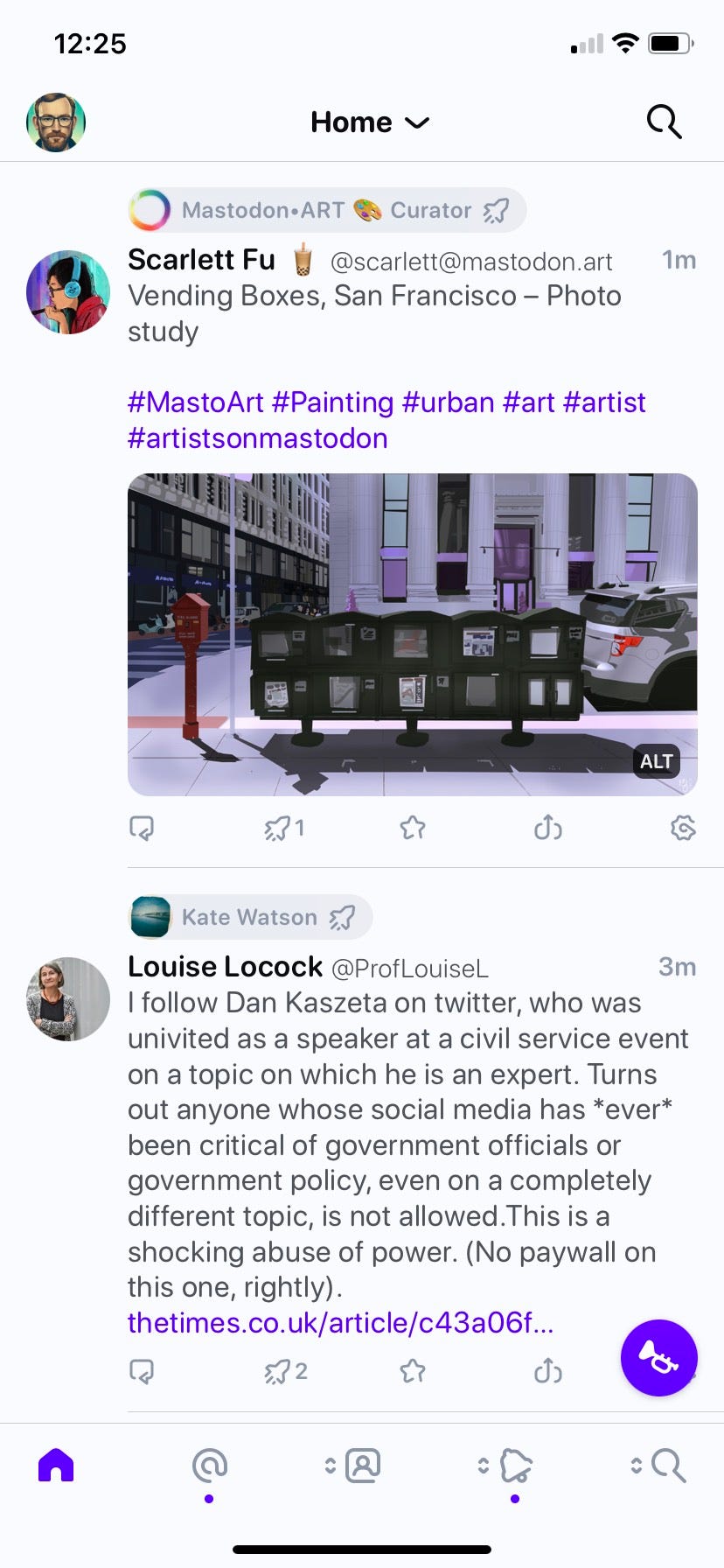
Screenshot of Ivory, a nice Mastodon app that improves the default UX.
Open Sesame!
The key thing is that we now have genuinely open options in 2023 for a decentralized version of Twitter. Both the AT Protocol and ActivityPub are open to anyone to use, and so if you’re a dev you won’t get rug-pulled if you build on top of them.
That said, you will still need broad community buy-in for what you build — just ask any developer who’s had the temerity to try and build a global search app on top of Mastodon! It’s apparently anathema to some people in the Mastodon community. However, I’d much rather have the community making those decisions than a meglomaniac billionaire.
For now, I’ll leave you with some of my Twitter bangers from 2007…the good old days when my feed was full of All Blacks and Radiohead references. If you were around too in the early days of Twitter, leave a comment or email me your memories.
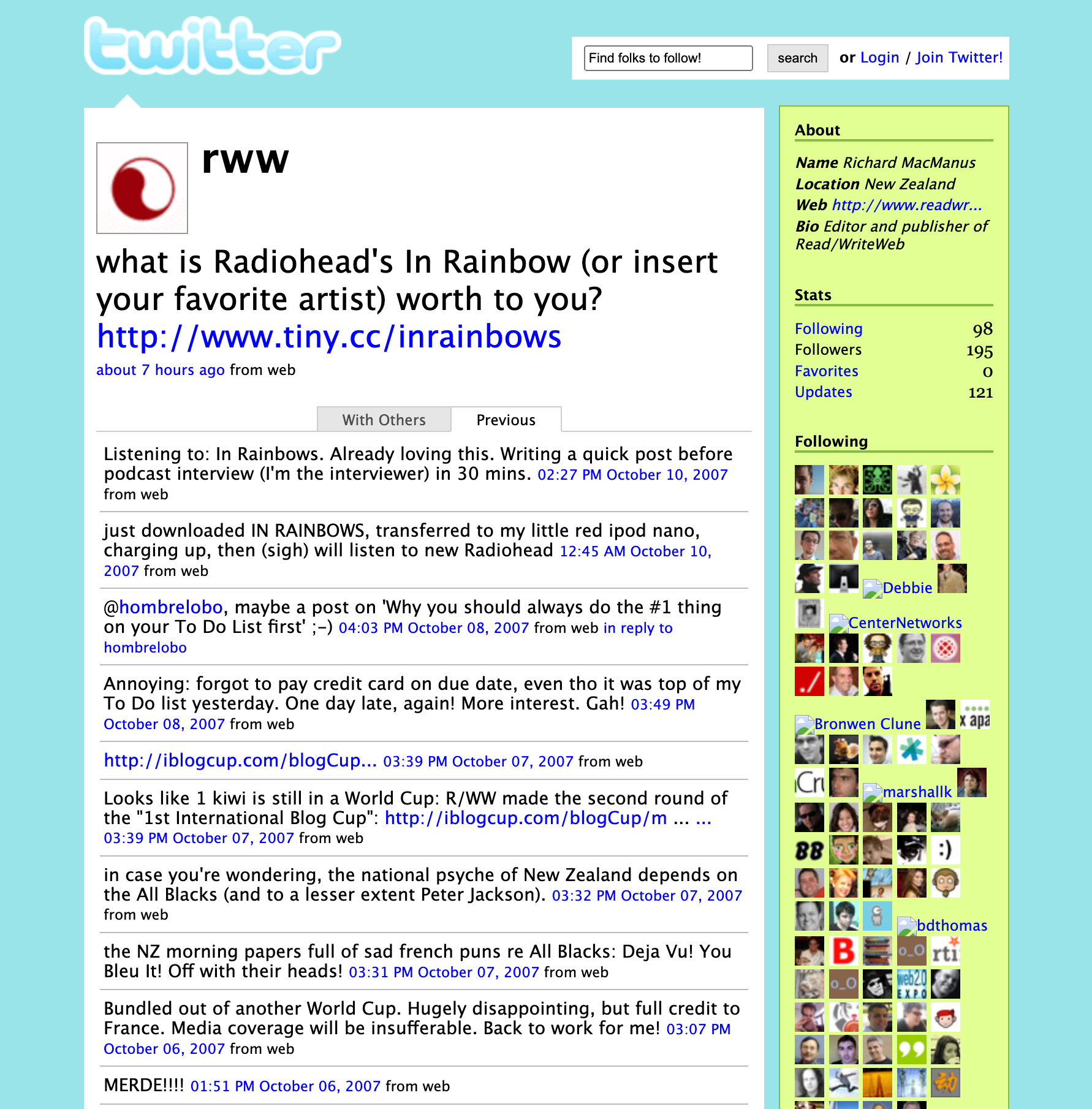
My Twitter feed, October 2007
Support Cybercultural
Cybercultural is a free newsletter, but you can also become a premium subscriber for £5 per month or £48 per year. Paid subscribers will receive the occasional bonus post, plus a thank-you mention in the paperbook book version of Bubble Blog.